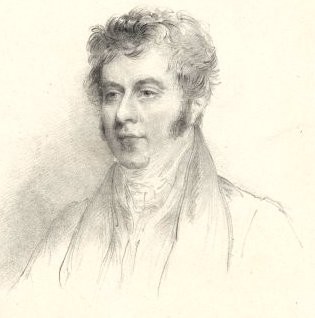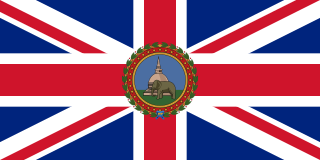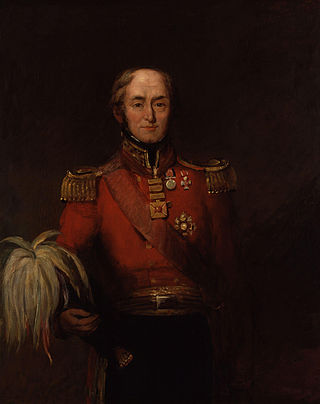
Sir Robert Baynes Horton was a British businessman. He was a director of the European Advisory Council and of Emerson Electric Company. He spent 30 years working for BP, formerly British Petroleum. He became Chief Executive and Chairman of the Board of BP in March 1990, but was forced out in 1992.

Sir Robert John Wilmot-Horton, 3rd Baronet, GCH, PC, FRS, born Robert John Wilmot, was a British politician, sociopolitical theorist, and colonial administrator. He was Under-Secretary of State for War and the Colonies between 1821 and 1828, and Governor of Ceylon between 1831 and 1837. He is most widely known for his writings on assisted emigration to the colonies of the British Empire.
Henry Tufnell was a British Whig politician.

Sir John Eardley Eardley-Wilmot, 1st Baronet was a politician in the United Kingdom who served as Member of Parliament (MP) for North Warwickshire and then as Lieutenant-Governor of Van Diemen's Land.

The governor of Ceylon was the representative in Ceylon of the British Crown from 1795 to 1948. In this capacity, the governor was president of the Executive Council and Commander-in-Chief of the British Forces in Ceylon. The governor was the head of the British colonial administration in Ceylon, reporting to the Colonial Office.

Lieutenant General Sir Edward Barnes, was a British soldier who became governor of Ceylon.
There have been three baronetcies created for persons with the surname Wilmot, one in the Baronetage of Ireland and two in the Baronetage of Great Britain. One creation is extant as of 2008.

The Mount Lavinia Hotel, in Mount Lavinia, Sri Lanka, is a 275-room hotel, situated at 100 Hotel Road in Mount Lavinia. It is recognised as one of the oldest and most famous hotels in the country. It has been continuously operating as a hotel since 1947, but was initially constructed as the Governor's residence in 1806.
Wilmot is a surname, and may refer to:

The Grand Hotel is a four-star boutique hotel in Nuwara Eliya, Sri Lanka, that was built in the style of an Elizabethan-era manor house. The hotel has 154 rooms, including three presidential suites, four junior suites, including a governor's suite that have been maintained to preserve the traditional design. The Grand Hotel has a number of restaurants, bars and a billiards room.
The A 1 road is an A-Grade trunk road in Sri Lanka. It connects the capital city of Colombo with Kandy.

Osmaston Hall was a country house built in 1696 in extensive grounds at Osmaston, Derbyshire, now an area of the city of Derby. The house was the home of the Wilmot baronets, and the Fox family before being used for a golf club and railway business. It was demolished in 1938, with the site now occupied by an industrial estate.

Royal College, Colombo is a selective entry boys' school located in Cinnamon Gardens, Colombo, Sri Lanka. Started as a private school by Rev Joseph Marsh in 1835, it was established as the Colombo Academy by Sir Robert Wilmot-Horton in January 1836, as part of the implementation of the recommendations of the Colebrooke Cameron Commission (1833), and was the first government-run secondary school for boys in the island.
Robert Wilmot (1809–1891) was a Canadian politician and a Father of Confederation.
The Colombo Journal was a short-lived English-language bi-weekly newspaper in Ceylon. The newspaper started on 1 January 1832 with George Lee as editor. George Lee was the Superintendent of the Government Press and later Postmaster General. The newspaper had the support of the government and Governor Robert Wilmot-Horton. Apart from Horton and Lee other senior government officials who wrote for the newspaper included the governor's private secretary Henry Tufnell and George Turnour. Criticism of the British government led to the newspaper being closed by the Colonial Office on 31 December 1833.
The Ceylon Chronicle was a short-lived English-language newspaper in Ceylon. The newspaper started on 3 May 1837 with Rev. Samuel Owen Glenie as editor. Rev. Glenie was the Anglican Colonial Chaplain of St. Paul's Church and later Archdeacon of Colombo. Although owned privately by a group of civil servants, the newspaper took a pro-government stance and had the support of senior government officials. Governor Robert Wilmot-Horton, Treasurer Temple, Postmaster General George Lee, Acting Chief Justice Sergeant Rough, Auditor General Henry Marshall and Proctor Henry Staples all wrote for the newspaper. The Ceylon Chronicle was a counter-weight to The Observer and Commercial Advertiser which opposed the government.

Wilmot Arthur de Silva was Ceylonese veterinary surgeon, politician and philanthropist. He was the Minister of Health (1936–1942) in the second State Council of Ceylon and a former President of the Ceylon National Congress.
The chief secretary of Ceylon, was the chairman and one of three officers of state of the Board of Ministers of the State Council of Ceylon from 1932 to 1947. The post succeeded that of Colonial Secretary which was one of six offices that held a seat in the Executive Council of Ceylon until 1932.
Mawanella Bridge is the oldest operational brick bridge in Sri Lanka. The bridge was built in 1833 in Mawanella over the Maha Oya. The arch bridge has four arches, with each arch 15 m (49 ft) in length and is constructed entirely from bricks.
George Lee was the first Superintendent of the Government Printing Office in Ceylon, between 1833 and 1835 and the Postmaster General of Ceylon between 1844 and 1859.












